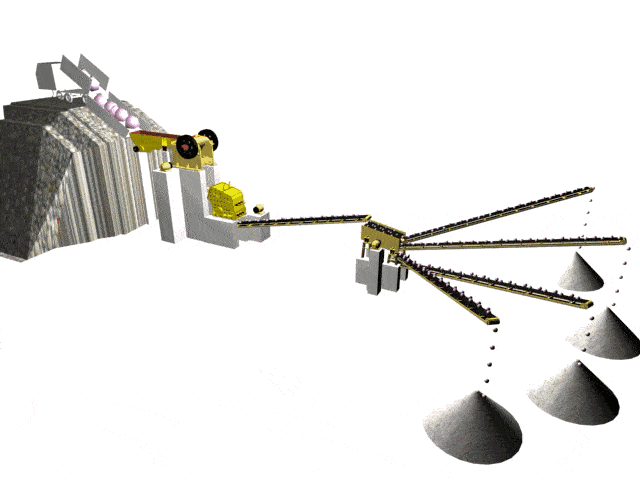
The main component of limestone is calcium carbonate (CaCO3) with a Mohs hardness of 3. Production of glass, coating materials, desiccants and raw materials required for construction.
The limestone aggregate production line is divided into three stages: coarse crushing, medium and fine crushing, and screening.
Limestone characteristics
The main component of limestone is calcium carbonate (CaCO3) with a Mohs hardness of 3. Production of glass, coating materials, desiccants and raw materials required for construction.
Limestone crushing production line process
The limestone sand making process is divided into four stages: coarse crushing, medium and fine crushing, sand making and screening.
The first stage: coarse crushing
The limestone blasted from the mountain is uniformly fed by the vibrating feeder through the silo, and then transported to the jaw crusher for coarse crushing.
The second stage: medium crushing
After the coarsely crushed materials are screened by the vibrating screen, they are conveyed by the belt conveyor to the impact crusher for intermediate crushing. The crushed stones are conveyed to the vibrating screen through a belt conveyor to screen out different specifications of stones. The stones that meet the customer's particle size requirements are conveyed to the finished product pile through the belt conveyor, and the stones larger than the upper screen size are returned through the belt conveyor. Until the impact crusher breaks again, forming a closed loop.
The third stage: sand making
After the medium crushing, the stones whose size is larger than the second-layer screen are conveyed to the sand making machine for fine crushing and shaping.
The fourth stage: screening
The finely crushed and shaped materials are then screened for coarse sand, medium sand, fine sand and other specifications through a circular vibrating screen.
The fifth stage: belt conveyor
The final material is transported to the designated location by a conveyor belt, stacked in piles, and then loaded onto a transport truck by a loader

Note: For those with strict requirements on the powder content of the sand, a sand washing machine can be added behind the fine sand. The sewage discharged from the sand washing machine can be recycled through the fine sand recovery device. On the one hand, on the other hand it can reduce environmental pollution and increase sand production output.
Contact: Hebe Wang
Phone: 008615092894665
Tel: 008615092894665
Email: info@sandmancrusher.com
Add: No.23 Yihe Road,Linyi City, Shandong Province, China
We chat
